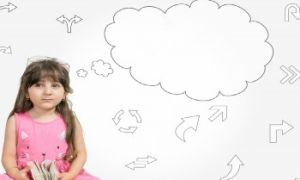A strong sense of well-being provides children with confidence and optimism which maximises their learning potential. It encourages the development of children’s innate exploratory drive, a sense of agency and a desire to interact with others. Well-being includes good physical health, feelings of happiness, satisfaction and successful social functioning. It influences the way children interact in their environments. The following article provides activities to promote each of the sub outcomes of EYLF Outcome 3 - Children Have A Strong Sense of Wellbeing.
Wellbeing In Early Childhood Services
Well-being incorporates both physical and psychological aspects and thus includes good physical health, feelings of happiness, satisfaction and successful social functioning. For a young child, all this forms the core of a positive sense of being. Educators can support this further by acknowledging each child’s cultural and social identity and responding sensitively to their emotional states.
Children’s well-being also determines their ability to feel connected with the world around them. Without a strong sense of well-being, it is difficult for young children to trust others and thus have a sense of belonging. This is because only when children feel emotionally and physically safe, they are going to willingly reach out to educators, peers and the wider community. A strong sense of well-being provides children with confidence and optimism to express their innate exploratory drive and a desire to interact with responsive others.
Children’s learning and physical development is set in motion as soon as they are born. From physical dependence and reflex actions at birth, their bodies proceed to stronger and better-integrated sensory, motor and cognitive systems. However, it is crucial that such development is facilitated through healthy experiences and environments since physical well-being contributes to children’s ability to concentrate, cooperate and learn – that form the core of becoming.
Yet another aspect of children’s wellbeing is developing resilience which would give them the capacity to cope with day-to-day stress and challenges. The readiness to persevere when faced with unfamiliar and challenging learning situations creates the opportunity for success and achievement. Children’s developing resilience and their ability to take increasing responsibility for their own health promote a sense of independence and confidence. As they experience being cared for by educators and others, they become aware of the importance of living and learning interdependently with others – thus bringing together belonging, being and becoming.
Activities To Promote EYLF Outcome 3
- 3.1 Children become strong in their social and emotional wellbeing
One of the most effective ways that educators can implement this Learning Outcome is by collaborating with children to document their achievements and share their successes with their families. For example, while taking photos, rather than having children pose, including action and expression to communicate significant moments in children’s learning. This could mean taking pictures of them catching a ball, dancing with friends, spinning in circles or expressing emotions like wonder and empathy which are much more difficult to document in words. Later talk about the photos with the children and discuss which of those they would like to put in their portfolio and which to take home to show their families.
One of the most meaningful ways to meet this Learning Outcome would be by promoting a sense of belonging, connectedness and well-being for all children. In case a child in your class uses a hearing aid or walking aid, look for ways you can make them feel included and connected to the rest of the class and classroom experience. Some strategies might be to allow children to approach and touch the machine or aids carefully. If one of the children feels wary of a machine or aid, help them understand it was probably the machine they found fearful and not the child. You can even encourage one of the parents to bring in an asthma nebulizer for the kids to see, feel and smell.
Setting and communicating high expectations of each child’s capabilities is not just a way to implement this Learning Outcome but one of the principles outlined in EYLF. And one of the ways educators can do this is by enabling every child to experience success by using different approaches that take into account and build on children’s strengths, interests and abilities. So if there is a child in your care who tends to work alone or shows little interest in numeracy, explore their interests and strengths – like perhaps an extensive knowledge about whales and the ability to draw well. You can then display this child’s paintings, make available a reference book on whales and encourage all children to construct sea creatures using boxes and other materials. Such a strategy will not only nurture the child’s sense of well-being by building their confidence as they take a leading role in this project but also give educators an opportunity to use whales and sea creatures to scaffold numeracy lessons.
One of the most important ways that educators can help children meet these Learning Objectives is by talking with children about their emotions and responses to events with a view to supporting their understandings of emotional regulation and self-control. For example, children can be taught to manage anger or anxiety by practising slow breathing techniques accompanied by slowly raising arms up and down. Alternately, teach them to count to four as you pretend you are smelling a flower and then four again as you imagine you are blowing out a candle. Sometimes crafts can be fun and creative ways to get angry kids to cool down, like making a Feeling or Worry box in which a child can write down what made them angry, and how they felt before putting the ‘feelings’ away in the box so that they can be dealt with later. Besides helping a child to let off steam by engaging in active work, such strategies can help them feel more in control over their situation.
- 3.2 Children take increasing responsibility for their own health and physical wellbeing
The most enjoyable way perhaps that this Learning Outcome can be implemented is by planning for and participating in energetic physical activity with children, including dance, drama, movement and games. For example, toddlers can be encouraged to run around a lot by racing in the park, chasing balls, and playing games like tag. However, if that is not possible, caregivers can plan indoor activities which use the body in varied ways like twirling with scarves and ribbons or dancing which in turn fosters musical, social and emotional intelligence. For slightly older children, educators can plan indoor or outdoor obstacle courses, and get them to climb frames and skip as part of unstructured play.
One of the most essential ways educators can implement this Learning Outcome is to promote continuity of children’s personal health and hygiene by sharing ownership of routines and schedules with children and families. In the classroom, this can be done by posting visual images of routines that remind children to wash hands before snack time or labelled images of the different hand-washing steps above the basin. Eventually, families can be roped in to ensure that children continue the same routines and practices at home and in other community places, like restaurants, too.
Positive eating practices are a significant aspect of physical well-being and educators can use them to engage children in experiences, conversations and routines that promote healthy lifestyles and good nutrition. Offer enough opportunities to children to question and discuss healthy food and eating practices through games and activities. During art time, use vibrant coloured fruits and veggies as still life models and then have fun making a salad out of those. Use crafts and songs to discuss the rainbow diet and incorporate it into eating practices as well.
Along with nutrition and activity, sleep and rest are core aspects of children’s physical and emotional well-being. Educators can thus meet this Learning Outcome by providing a range of active and restful experiences throughout the day and supporting children to make appropriate decisions regarding participation. One of the ways this can be implemented is by using a multi-room sleep approach. In, while the cot room is used for babies to get their daytime naps, a sleeping room can be created from available rooms in the middle of the day. 2-3-year-olds who do not wish to sleep during the day either join the older or younger room (depending on age and preference) and are engaged in relaxing activities like reading books, doing puzzles, drawing or yoga. Such strategies not only help educators meet varying rest and relaxation needs of children but also teach little bodies and minds the importance of unwinding from a feverish pitch of activity and excitement to calmer states.
Further Reading:
The following article provides activities to promote each of the sub outcomes of EYLF Outcome 1: Children Have A Strong Sense Of Identity: Activity Ideas To Promote EYLF Outcome 1
The following article provides activities to promote each of the sub outcomes of EYLF Outcome 2: Children Are Connected With And Contribute To Their World. Activity Ideas To Promote EYLF Outcome 2
The EYLF is a guide that consists of Principles, Practices and 5 main Learning Outcomes along with each of their sub outcomes, based on identity, community, wellbeing, learning and communication. For more information: Understanding EYLF
Within the Early Years Learning Framework, there are three basic concepts that children’s lives are characterized by. Belonging, Being and Becoming. For more information, please read the following: Belonging, Being & Becoming Concepts Of The EYLF
The EYLF Learning Outcomes are goals that can be achieved by a child during their learning. The outcomes and sub outcomes cover a variety of areas which include identity, community, wellbeing, learning and communication. For more information, please read the following: EYLF Learning Outcomes
The following article provides information on each of the 5 Principles and examples of strategies of how to implement the eylf principles into your service. For more information, please read the following: EYLF Principles And Strategies To Implement Them
The following article provides information on each of the 8 Practices and examples of how to implement the eylf practices into your service. For more information: EYLF Practices And Strategies To Implement Them
A guide for educators on what to observe under each sub learning outcome from the EYLF Framework, when a child is engaged in play and learning. For more information, please read the following: How Children Can Achieve EYLF Learning Outcomes
To support children achieve learning outcomes from the EYLF Framework, the following list gives educators examples of how to help children with their goals. For more information, please read the following: How Educators Can Promote EYLF Learning Outcomes
References:
- Belonging, Being and Becoming EYLF For Australia, ACECQA
- Educators' Guide To The EYLF, ACECQA


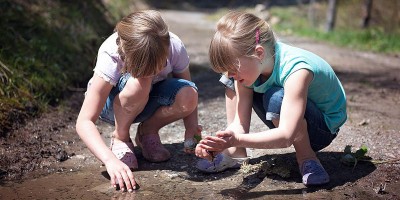

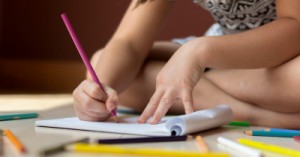
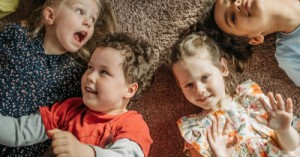
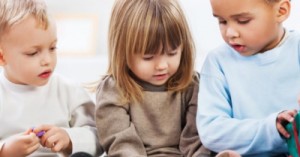
 Here is the list of the EYLF Learning Outcomes that you can use as a guide or reference for your documentation and planning. The EYLF
Here is the list of the EYLF Learning Outcomes that you can use as a guide or reference for your documentation and planning. The EYLF The EYLF is a guide which consists of Principles, Practices and 5 main Learning Outcomes along with each of their sub outcomes, based on identity,
The EYLF is a guide which consists of Principles, Practices and 5 main Learning Outcomes along with each of their sub outcomes, based on identity, This is a guide on How to Write a Learning Story. It provides information on What Is A Learning Story, Writing A Learning Story, Sample
This is a guide on How to Write a Learning Story. It provides information on What Is A Learning Story, Writing A Learning Story, Sample One of the most important types of documentation methods that educators needs to be familiar with are “observations”. Observations are crucial for all early childhood
One of the most important types of documentation methods that educators needs to be familiar with are “observations”. Observations are crucial for all early childhood To support children achieve learning outcomes from the EYLF Framework, the following list gives educators examples of how to promote children's learning in each individual
To support children achieve learning outcomes from the EYLF Framework, the following list gives educators examples of how to promote children's learning in each individual Reflective practice is learning from everyday situations and issues and concerns that arise which form part of our daily routine while working in an early
Reflective practice is learning from everyday situations and issues and concerns that arise which form part of our daily routine while working in an early Within Australia, Programming and Planning is reflected and supported by the Early Years Learning Framework. Educators within early childhood settings, use the EYLF to guide
Within Australia, Programming and Planning is reflected and supported by the Early Years Learning Framework. Educators within early childhood settings, use the EYLF to guide When observing children, it's important that we use a range of different observation methods from running records, learning stories to photographs and work samples. Using
When observing children, it's important that we use a range of different observation methods from running records, learning stories to photographs and work samples. Using This is a guide for educators on what to observe under each sub learning outcome from the EYLF Framework, when a child is engaged in
This is a guide for educators on what to observe under each sub learning outcome from the EYLF Framework, when a child is engaged in The Early Years Learning Framework describes the curriculum as “all the interactions, experiences, activities, routines and events, planned and unplanned, that occur in an environment
The Early Years Learning Framework describes the curriculum as “all the interactions, experiences, activities, routines and events, planned and unplanned, that occur in an environment

